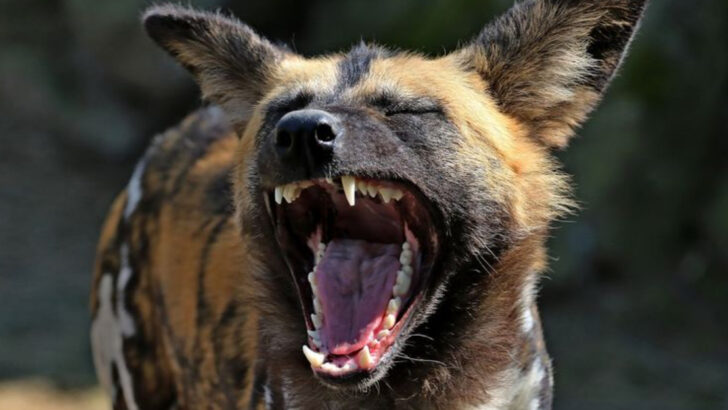They don’t just survive—they dominate.
These are nature’s killers. Masters of the ambush. Kings and queens of tooth and claw. Across every corner of the globe, certain mammals have clawed, sprinted, and battled their way to the top. They’re not just dangerous—they’re built for destruction.
Imagine locking eyes with a jaguar in the Amazon. Feeling the rumble of a lion’s roar on the savanna. Watching a polar bear ghost across the ice. These aren’t animals you meet—they’re animals you survive.
From stealthy stalkers to bone-crushing juggernauts, the mammals on this list didn’t get here by playing nice. They kill with precision, rule with muscle, and leave a trail of awe in their wake.
Welcome to the kill zone.
African Lion

Known as the king of the jungle, the African lion reigns supreme across the vast savannas. Its powerful roar can be heard up to five miles away, striking fear into the hearts of all creatures.
Lions live in prides, showcasing exceptional teamwork in hunting. A lion’s mane is a symbol of strength, with darker hues indicating more dominant individuals. Interestingly, lions spend around 20 hours a day resting.
Despite their reputation, they are vulnerable due to habitat loss. Their majesty and strength remain unparalleled, making them a symbol of courage and pride.
Polar Bear
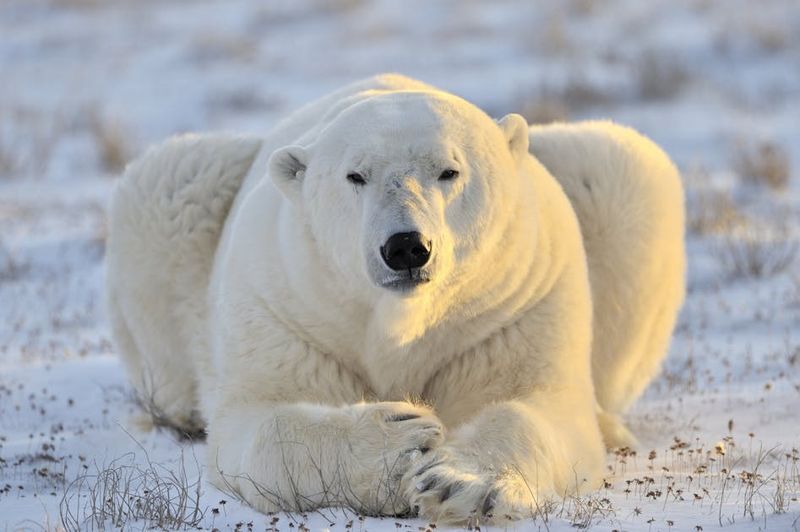
In the icy Arctic, the polar bear is an apex predator, ruling the frozen lands with unmatched might. These bears have adapted to the harshest environments, relying on their thick fur and fat layers for warmth.
Polar bears are excellent swimmers, traveling long distances in search of food. Their primary diet consists of seals, cleverly hunted by waiting near breathing holes. Climate change poses a significant threat to their survival, shrinking their habitat.
Despite these challenges, their strength and resilience are a testament to nature’s adaptability and power.
Bengal Tiger

The Bengal tiger, with its fiery coat and piercing eyes, is a symbol of power and grace in the Indian forests. Known for its solitary nature, the tiger is a masterful hunter.
It relies on stealth and strength, with a single strike capable of taking down its prey. Bengal tigers are known to swim across rivers, showcasing their versatility. Unfortunately, poaching and habitat destruction threaten their existence.
Conservation efforts are crucial to ensuring their survival. Their fierce independence and beauty remain a captivating force of nature.
Grizzly Bear
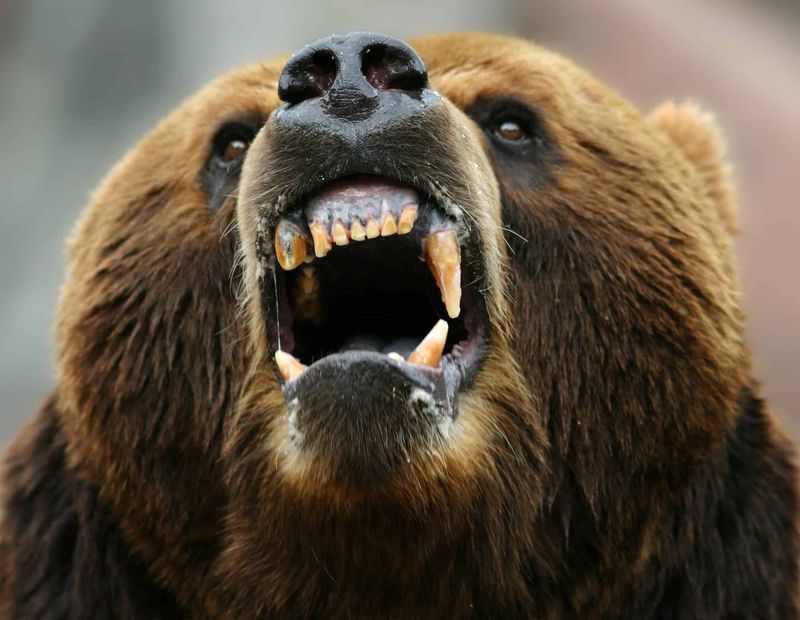
With incredible strength and endurance, the grizzly bear dominates the North American wilderness. These bears are omnivorous, feasting on a varied diet from berries to large mammals.
During salmon spawning season, grizzlies demonstrate their skill in fishing. They possess a keen sense of smell, often detecting food from miles away. Grizzly bears hibernate during winter, conserving energy for the spring.
Despite their seemingly lumbering nature, they can run at speeds up to 35 mph. Their imposing presence and adaptability highlight their role as formidable apex predators.
Jaguar
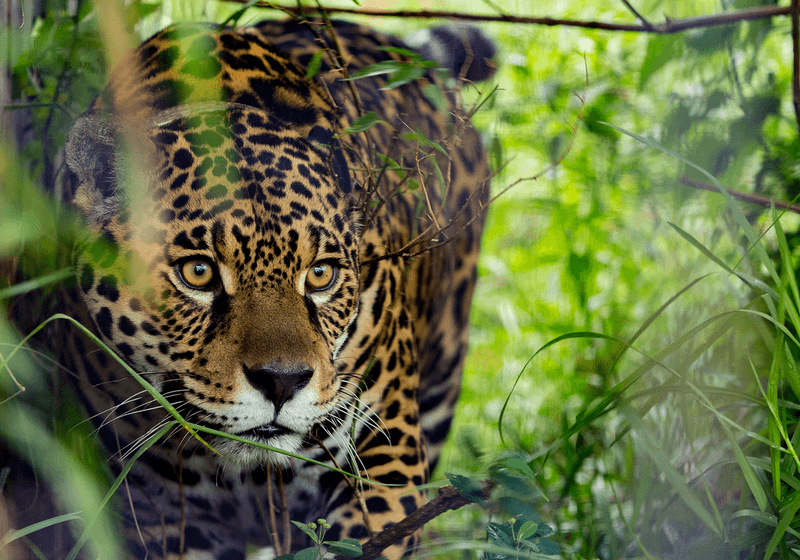
In the dense Amazon rainforest, the jaguar is a symbol of agility and power. Known for its distinctive rosette-patterned coat, this solitary predator is a master of ambush.
Jaguars have exceptionally strong jaws, capable of piercing the skulls of their prey. They are adept swimmers, often hunting in rivers for fish and caimans. The jaguar’s role in indigenous cultures is profound, often revered as a symbol of strength and mystery.
Despite their prowess, habitat loss poses a threat to their existence. Their enigmatic nature continues to intrigue.
Gray Wolf
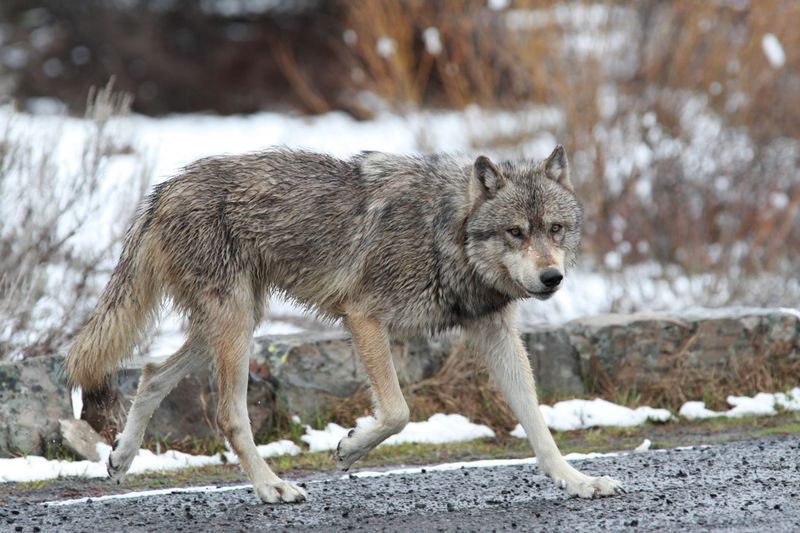
Gray wolves epitomize the spirit of the wild, known for their intelligence and social structure. Living in packs, they are skilled hunters, relying on teamwork to take down larger prey.
Each pack has a strict hierarchy, with the alpha pair leading. Their haunting howls echo through the wilderness, communicating with distant pack members. Wolves play a crucial role in ecosystem balance, controlling prey populations.
Conservation efforts have allowed their numbers to rebound in some areas. Their resilience and social dynamics make them fascinating subjects of the natural world.
Cheetah

The cheetah, renowned for its speed, is the fastest land animal, reaching speeds up to 70 mph. Its slender body and long legs are perfectly designed for chasing down prey on the open plains.
Cheetahs rely on their keen eyesight to spot distant targets, launching into a sprint with explosive power. Unlike other big cats, cheetahs hunt during the day, reducing competition with nocturnal predators.
Despite their speed, they face threats from habitat loss and competition with larger carnivores. Their elegance and agility are unmatched in the animal kingdom.
Leopard
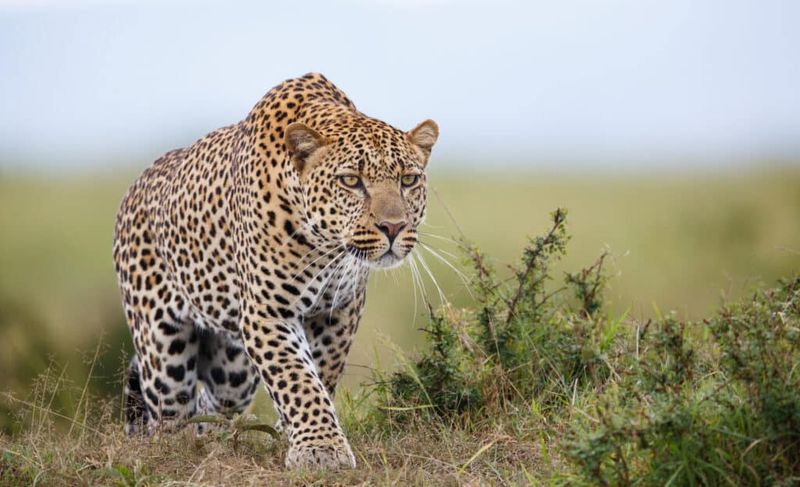
Leopards are solitary and elusive, known for their adaptability across various habitats. Their stunning spotted coats provide excellent camouflage, making them stealthy hunters.
Leopards are strong climbers, often dragging prey up trees to avoid scavengers. They have a diverse diet, capable of hunting animals much larger than themselves. Leopards can be found in Africa, Asia, and the Middle East, showcasing their wide range.
Despite their adaptability, human encroachment threatens their existence. Their mysterious and solitary nature makes them a captivating presence in the wild.
Hyena
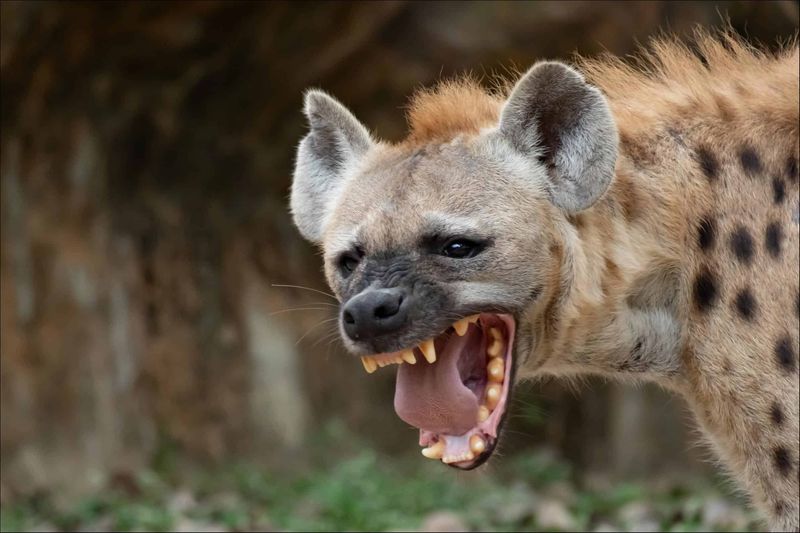
Hyenas, often misunderstood, play a vital role in the African ecosystem. Known for their distinctive laugh, they are skilled scavengers and hunters. Hyenas have powerful jaws, capable of crushing bones to extract marrow.
They live in clans, with complex social structures led by a dominant female. Despite their reputation as scavengers, hyenas hunt effectively, often taking down prey like wildebeests.
Their intelligence and adaptability are key to their survival in harsh environments. Hyenas’ resilience and unique social dynamics make them intriguing creatures of the wild.
Mountain Lion
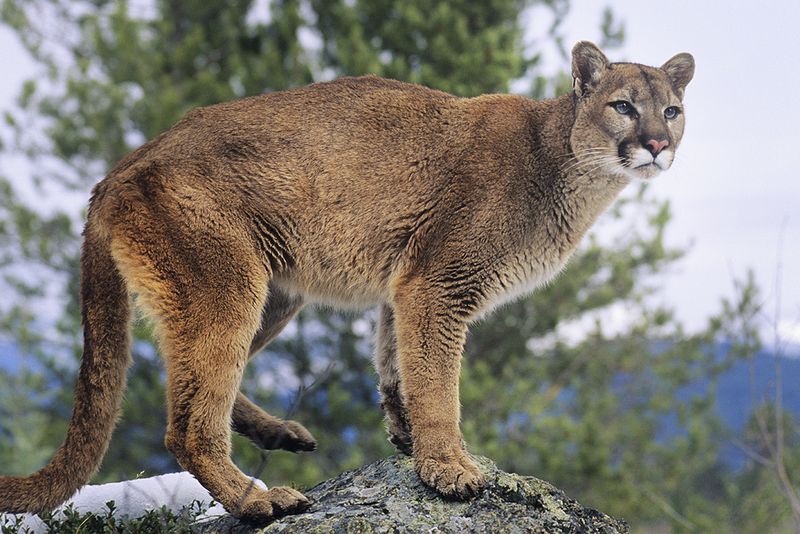
The mountain lion, also known as a cougar, is a stealthy and adaptable predator found across the Americas. These solitary cats are highly territorial, using stealth and power to hunt deer and other mammals.
Mountain lions have incredible leaping abilities, capable of jumping 15 feet vertically. Their adaptability has allowed them to thrive in diverse environments, from forests to deserts.
Despite being elusive, they play a crucial role in maintaining ecological balance. Habitat loss and human conflicts pose significant threats. Their grace and adaptability continue to captivate.
Kodiak Bear
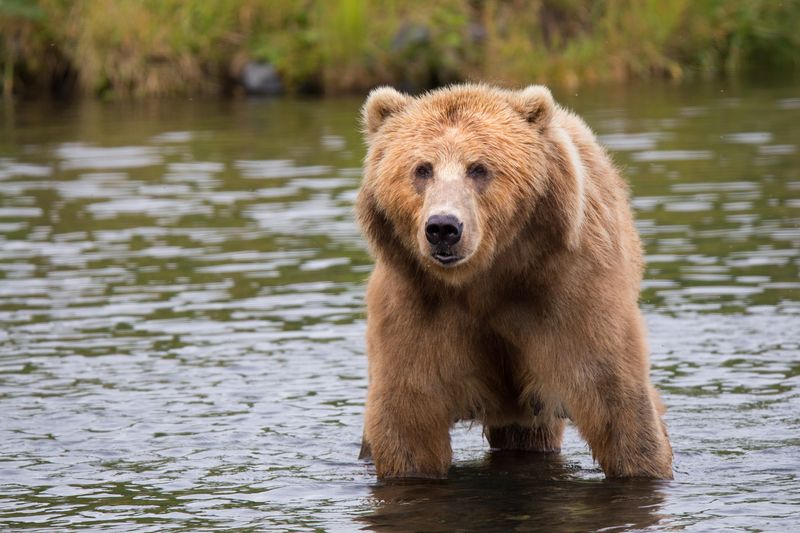
The Kodiak bear, one of the largest bear species, inhabits the remote islands of Alaska. These bears have a varied diet, consuming everything from berries to large mammals.
During salmon season, they showcase their impressive fishing skills. Kodiak bears are solitary, with males and females coming together only to mate. Despite their size, they are agile climbers and swimmers.
Conservation efforts protect their habitat from human encroachment. Their sheer size and strength make them formidable apex predators, commanding respect and awe in the wild.
Orca (Killer Whale)

The orca, or killer whale, is a testament to the power of social hunting. As the ocean’s top predator, it uses sophisticated communication and teamwork to hunt a variety of prey, from fish to large marine mammals like seals and even whales.
Orcas are known to be incredibly intelligent, using strategies such as wave washing to knock seals off ice. Interestingly, these mammals can be found in all oceans, adapting their hunting techniques to the available prey. Their sheer power and agility, combined with their social structure, make them formidable predators.
Did you know? Some orcas specialize in hunting sharks, using their intelligence to avoid the lethal bites of their prey.
Saltwater Crocodile

Dominating the waters of Southeast Asia and Northern Australia, the saltwater crocodile is the largest living reptile and a fierce predator. Known for their ambush tactics, they can swiftly attack with explosive speed, taking down prey much larger than themselves.
These crocodiles have a bite force unmatched in the animal kingdom, capable of crushing bones effortlessly. Their opportunistic nature means they will eat almost anything, from small mammals to large water buffalo.
A fascinating fact: saltwater crocodiles can swim up to 1,000 kilometers in the ocean, showcasing their incredible adaptability and survival skills.
African Wild Dog
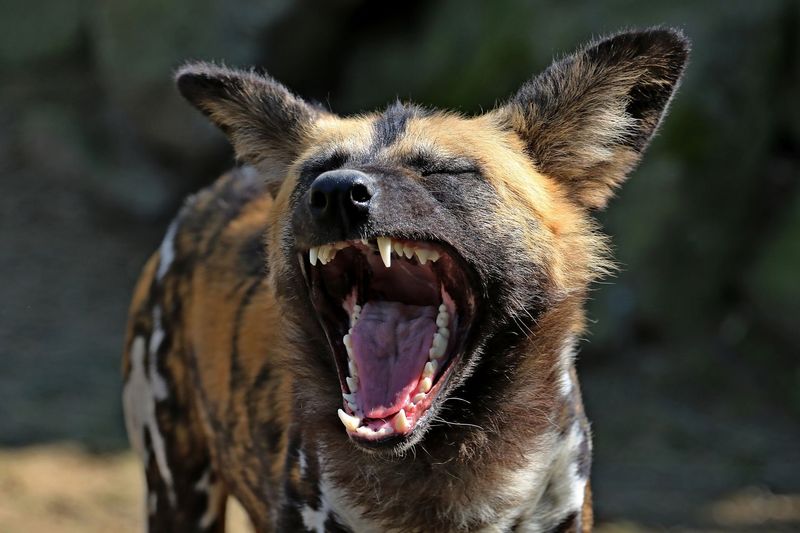
African wild dogs, with their striking patterns and large ears, are among the most efficient hunters in the animal kingdom. They hunt in packs, showcasing remarkable teamwork and strategy.
Their social structure is complex, resembling a close-knit family unit. Unlike other predators, wild dogs care for sick or injured members. Habitat fragmentation and human encroachment threaten their survival.
Conservation efforts are vital to preserve their numbers. Their cooperative nature and hunting prowess highlight their unique role in the African ecosystem, capturing the imagination of wildlife enthusiasts.
Komodo Dragon
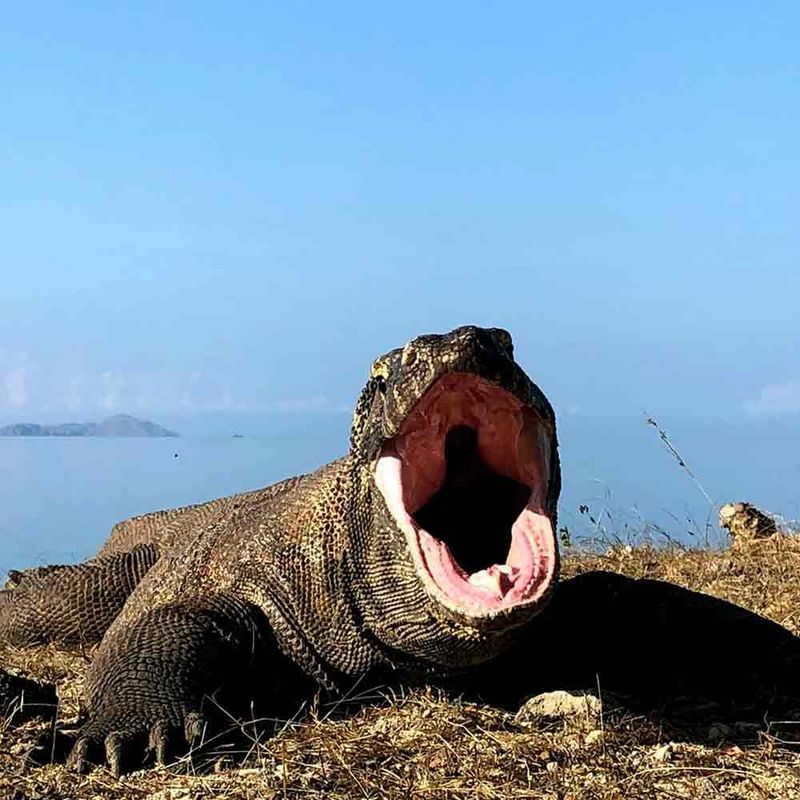
The Komodo dragon, the world’s largest lizard, reigns supreme in the ecosystems of the Indonesian islands. This formidable reptile uses a potent combination of stealth, power, and toxic saliva to bring down prey.
Capable of sprinting up to 20 kilometers per hour, it ambushes deer and pigs, delivering a venomous bite that incapacitates its prey. Komodo dragons are solitary hunters but can be seen in groups when feeding on large carcasses.
Their ability to take down prey larger than themselves secures their place as apex predators. An interesting tidbit: Komodo dragons have been known to dig up and consume human graves, a testament to their keen sense of smell and adaptability.
Tasmanian Devil

In the wilds of Tasmania, the Tasmanian devil reigns as the largest carnivorous marsupial. Known for its ferocious feeding habits, these creatures have powerful jaws, capable of crushing bones.
Despite their name, they are shy and prefer solitude. Tasmanian devils play a crucial ecological role, cleaning up carrion from the environment. Facial tumor disease poses a significant threat, endangering their population.
Conservation efforts aim to secure their survival. Their distinctive screeches and formidable bite make them a unique and intriguing species in the animal kingdom.
Great White Shark
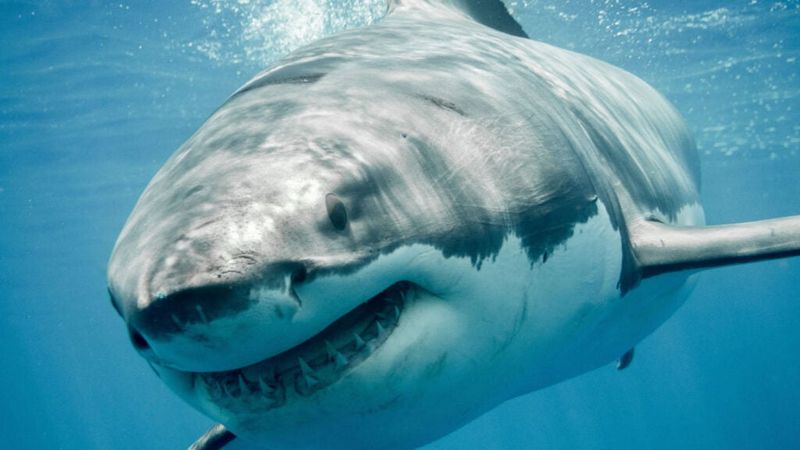
The great white shark, often portrayed as the ocean’s ultimate predator, combines power and precision to dominate the marine food chain. With rows of serrated teeth and a keen sense of smell, it detects prey from kilometers away.
Great whites are known for their breaching behavior, where they launch themselves out of the water to catch seals. This spectacular hunting technique showcases their strength and speed. Interestingly, despite their fearsome reputation, great whites are quite curious and often investigate objects with gentle bites.
Did you know? Each great white shark has a unique set of teeth, much like a human fingerprint.
Wolverine
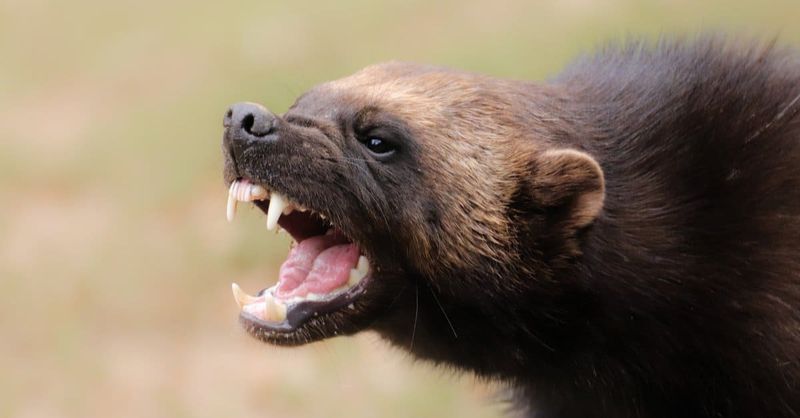
Wolverines, with their fierce reputation, roam the remote northern forests as relentless predators. Despite their small stature, they exhibit incredible strength and ferocity.
Wolverines rely on their keen sense of smell to locate prey and carrion beneath snow. Their tenacity allows them to challenge much larger animals for food. Habitat fragmentation and climate change threaten their populations.
Wolverines are solitary, with vast territories. Their fearless nature and survival instincts make them a symbol of wilderness resilience. Their enigmatic presence fascinates those who study the untamed world.
Honey Badger
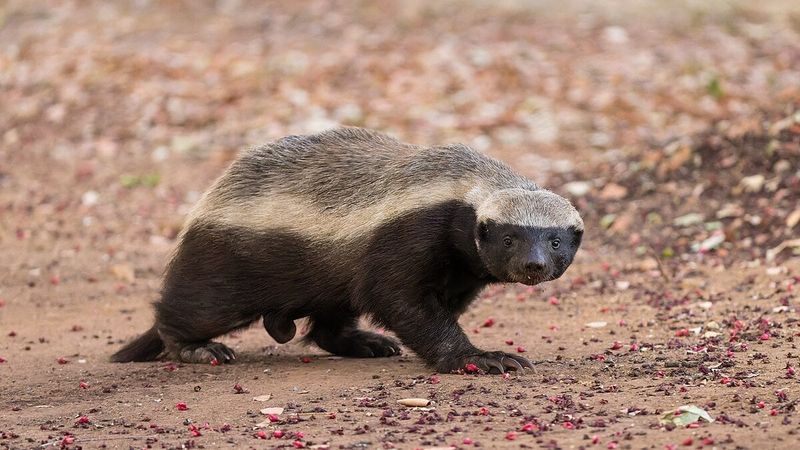
Renowned for its fearless nature, the honey badger defies size norms in the animal kingdom. Its tenacity is legendary, taking on lions and snakes without hesitation.
With thick skin and sharp claws, it’s perfectly adapted for survival in harsh environments. Despite its small stature, it exhibits unparalleled ferocity.
Surprisingly intelligent, the honey badger uses tools and exhibits problem-solving skills. Did you know? Its resistance to venom allows it to survive snake bites. Truly, a small mammal with an indomitable spirit and unmatched boldness.

